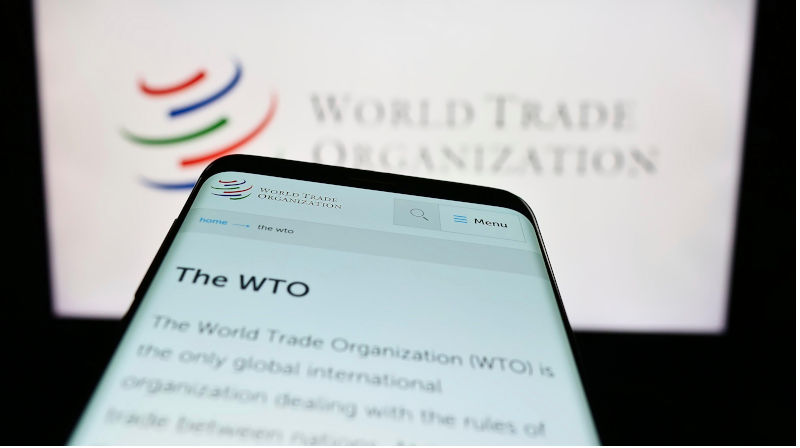Before attending a recent talk by Geoffrey Blainey entitled “The Causes of War”, I looked again at his monumental volume – “Causes of War”. The first sentence of Chapter One reads: “For every thousand pages published on the causes of wars there is less than one page directly on the causes of peace.” I agree.
In my view, that one page should most certainly include the stable and predictable trading environment we have experienced for most of post-World War II; a rules-based trading system served by an effective dispute resolution system. In the words of Cordell Hull, former US secretary of state, a founding father of the rules-based trading system and winner of the 1947 Nobel Peace Prize: “The truth is universally recognised that trade between nations is the greatest peacemaker and civiliser within human experience.”
While a successful trading system operated under the General Agreement on Tariffs and Trade and then the World Trade Organisation for most of the post-World War II years, the trading system is now in total disarray with increased weaponisation of trade measures and growing international tensions due to the trade policies.
We are now confronted with a trade war which The Wall Street Journal has labelled “the dumbest trade war in history”. Not all are concerned about this “dumb” trade war. President Trump remarked: “When a country is losing many billions of dollars on trade with virtually every country it does business with, trade wars are good, and easy to win. It’s easy!”
Blainey’s Causes of War focuses on traditional, organised armed conflicts between states. However, trade wars are metaphorical “wars” like the War on Drugs, War on Poverty and the Cold War. They are characterised by tariffs, sanctions, or restrictions to gain economic advantages, protect industries or, in more recent times, reacting to threats to national security.
History tells us that while trade wars may not cause military conflict, they can certainly contribute to a deterioration of international relations and may even significantly contribute to military conflict itself
We have much to learn from history. A good starting point is 1929 and the Great Depression; businesses failed, and unemployment soared. As is the case today, many members of Congress blamed cheap imports and looked to high tariffs to safeguard American jobs by reducing foreign competition.
The Smoot-Hawley Act, signed into law in June 1930, proposed tariffs on more than 20,000 imported goods at historically high levels. The average tariff increased from 38% to 60%.
Unlike Trump, President Hoover saw the danger of increasing tariffs and the possibility of retaliatory tariffs. Nevertheless, under significant pressure from Congress, he reluctantly signed the bill into law.
Retaliatory tariffs exacerbated the Depression and by 1933, global trade had declined by 66%.
Countries turned inward. Nationalist movements such as the Nazi Party in Germany promised economic recovery through aggressive expansionism, self-sufficiency, and rearmament, while Japan sought resources and markets to support economic recovery via imperial expansion across East Asia.
The link has been frequently drawn between the ensuing trade war and military conflict. According to Ronald Reagan, who was pressed for increased tariffs in 1973: “the Smoot Hawley Act contributed to the Great Depression and intensified global political tensions, setting the stage for World War II”.
In the post-World War II period, there was a clear need to establish a new international economic order. The Bretton Woods conference in New Hampshire held under the auspices of the United Nations created the International Monetary Fund and the International Bank for Reconstruction and Development (now the World Bank).
Importantly, the attempt to establish an International Trade Organisation, also under the auspices of the United Nations, failed. The Havana Charter negotiated in Cuba for the ITO was signed by 56 countries in March 1948, but did not come into being. The US Congress considered it to be an infringement of national sovereignty. Without US ratification, other countries saw little incentive to proceed. The ITO was never established.
With the failure of the ITO, it was clear that there was a need to reduce tariffs and bring order to world trade generally. This role was assigned to the General Agreement on Tariffs and Trade created in 1947 which, with 22 member counties, contained elements of the Havana Agreement. The GATT is not a UN agency, but acted as an interim agreement awaiting the eventual creation of an ITO. The wait was long. It took almost five decades to establish the WTO in 1995.
The WTO has a vastly expanded mandate compared to GATT, with 166 members and 22 more countries, less and least developed, seeking to join the WTO. World trade has increased 262 times in value terms since 1948 and 60 times in real terms. The average growth of world trade over the past 20 years is 5.3% per annum. The share of international trade in world GDP has increased; from just 18% in 1947 to 58% today. Few would deny the contribution of the rules-based trading system to these results.
In the view of Martin Wolf of the Financial Times: ‘The multilateral trading system is the most remarkable achievement in institutionalised global economic cooperation that there has ever been.”
On the other hand, Trump responded to a question whether his trade policies would contravene the WTO, saying: ”It doesn’t matter … if that’s the case, we’re going to pull out. These trade deals are a disaster. The WTO is a disaster.”
From an Australian perspective, according to the Department of Foreign Affair and Trade, a “rules-based trading system centred on the WTO is fundamental to Australia’s interests. Strong rules that help constrain the exercise of coercive power contribute to global security”.
Why is the constraint of coercive power so important for Australia?
In the event of a trade war between countries, such as China and the United States, whom should Australia side with?
With a well-functioning rules-based trading system, this question does not arise. If both countries have agreed to trade according to rules they themselves have negotiated, adjudication is not determined by commercial, or military might, but by the agreed rules coupled with a mutually acceptable dispute settlement system.
Against this backdrop, there are important questions to be addressed.
The WTO is presently moribund, but can it be revamped to restore it to its key role in global governance? The answer to this is clearly no.
The parameters of the trading system have changed radically, with WTO rules looking increasingly obsolete. At the most fundamental level, this change results from vastly different economic management models coupled with rising geopolitical tensions. Inclusive multilateralism exemplified by the WTO over the past two decades is unlikely to serve as the model for “re-globalisation” in the future.
What is needed is a cohesive body to oversee economic policy among like-minded countries. Such an organisation would allow these countries to maintain the benefits of trade and international investment while eliminating the inefficiencies associated with economic engagement with non-market economies.
Is there a role for the WTO?
In The Causes of War, Blainey notes that peace is usually achieved when opposing sides agree that continuing conflict would be too costly or unsustainable; nations see that the expense of ongoing war outweighs any potential gains. As such, peace is not an inherent condition, but rather a state that is negotiated or imposed after periods of tension or warfare.
We are not at this stage of negotiation today. The reality is that countries are even prepared to adopt measures that result in self-harm, hoping the harm to the trading partner will be greater than their own. The Trump tariffs, particularly on China, provide a good example.
As economic and national security issues become increasingly fused, the need for a cohesive body to oversee economic policy among like-minded countries is becoming increasingly apparent. The question is whether any mutual trading system can be devised at all in current circumstances or do we just have to wait for the existing one to collapse altogether?
While negotiation is clearly necessary, and the WTO is the obvious venue, after three decades of failed negotiations the collective political for fundamental change is absent.
These failed negotiations lead to not only “the dumbest trade war in history” but perhaps “the most economically costly trade war in history” … or worse.
Gary Sampson is Professor of International Trade at the Melbourne Business School, former Director at the GATT and WTO, and Senior Counsellor to the Director General”

